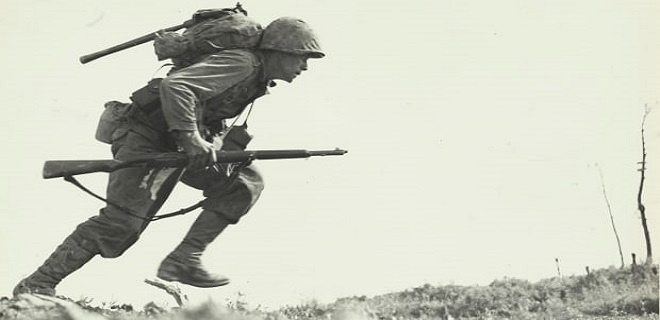During World War II, battleships and submarines carried echo sounders to locate enemy submarines (Figure below). Echo sounders produce sound waves that travel outward in all directions, bounce off the nearest object, and then return to the ship. By knowing the speed of sound in seawater, scientists calculate the distance to the object based on the time it takes for the wave to make a round-trip. During the war, most of the sound waves ricocheted off the ocean bottom.
After the war, scientists pieced together the ocean depths to produce bathymetric maps, which reveal the features of the ocean floor as if the water were taken away. Even scientists were amazed that the seafloor was not completely flat (Figure right).
The major features of the ocean basins and their colors on the map in Figure right include:
mid-ocean ridges: rise up high above the
- deep seafloor as a long chain of mountains; e.g. the light blue gash in the middle of the Atlantic Ocean. deep-sea trenches: found at the edges of
- continents or in the sea near chains of active volcanoes; e.g. the very deepest blue, off of western South America. abyssal plains: flat areas, although many
- are dotted with volcanic mountains; e.g. consistent blue off of southeastern South America.
When they first observed these bathymetric maps, scientists wondered what had formed these features
Seafloor Magnetism
Sometimes — no one really knows why — the magnetic poles switch positions. North becomes south and south becomes north.
- Normal polarity: north and south poles are aligned as they are now.
- Reversed polarity: north and south poles are in the opposite position
During WWII, magnetometers attached to ships to search for submarines located an astonishing feature: the normal and reversed magnetic polarity of seafloor basalts creates a pattern.
- Stripes of normal polarity and reversed polarity alternate across the ocean bottom
- Stripes form mirror images on either side of the mid-ocean ridges (Figure below).
- Stripes end abruptly at the edges of continents, sometimes at a deep-sea trench (Figure below).
 TECHGUIDANCES
TECHGUIDANCES




